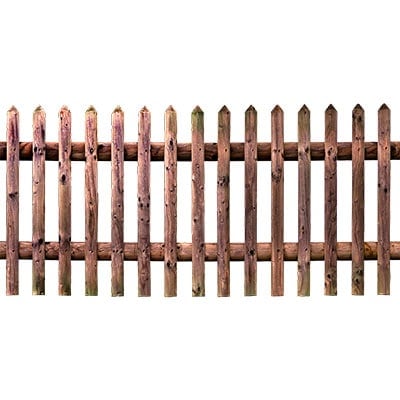
Tools you will need for the job
- A spirit level
- A tape measure
- Wood preserver
- A saw
- A sledge hammer
- Screw drivers
- String
- A claw hammer
- A varnish brush
- A sealant gun
Choose your panels; think carefully and practically about your choice of panel, do you need privacy? Do you need to spice the garden up with decorative panes? Or do you need to simplest, cheapest fence panel? It will also depend how long you’d like them to last, for instance, dip treated panels have a guarantee of 10 years and pressure treated fence panels have a guarantee of up to 15 years against rotting and fungal decay.
- Close board fencing offers you great privacy, due to being made up of vertical overlapping timber boards which provide your privacy and a strong, solid panel. These are known as the strongest and heaviest kind.
- Overlap fencing is made up of overlapping panels styled horizontally and these fence panels and commonly known as the cheaper option, although it will still maintain the privacy of your garden/area.
- Trellis panels are a good way of holding onto security whilst adding decoration to the garden, especially when you are using a solid panel with the trellis fence topper.
So, posts, wooden or concrete? Well, here is a little grid to help you choose;
Wooden Advantages
• Appearance, these will match your panels
• Easy to handle
Concrete Advantages
• These posts give the highest, strongest quality
Wooden Disadvantages
• Sunken timber in the ground has a risk of rotting
Concrete Disadvantages
• Heavy and bulky therefore hard to handle
• Require a lot of work when installing
Whatever posts you choose, you will need to have them 2ft higher than your panels. (This will only apply if you are sinking them into concrete below ground) Otherwise you will need to use post spikes which can count for the sinking space, you will use the same sized posts and panels for this method.
Preparation begins now
First of all, it is recommended that you clear the area you wish to install your fencing; it’s also recommended that you re-treat your panels before installation, even if you have a treatment with a guarantee just to ensure you are getting full potential from your fence. Then it’s a good idea to mark out your fencing area with string line and pegs to follow when digging holes for your posts, ensuring your measurements and alignment is correct.
So, we are ready!
Step 1
Now that you have marked out your area, you are ready to dig the holes to sink the panels into, or insert the spikes.
Step 2
Once the 2ft holes are ready, you are able place your posts in, supporting them with other posts at an angle. If you are using spikes, you simply rest the post on the spike.
Step 3
Pour the concrete mix down into the hole surrounding the post nicely. Using a spirit level, check the post is upright, before this sets.
Step 4
Then, when the concrete has set around your posts, you will need to fix the panels to the posts with U shaped brackets.
Step 5
Gravel board time, you are then going to attach the gravel board to the bottom on the panel, this prevents the panel rotting and the pressure treated board instead.
Finish
You then have yourself a row of fence panels, sunken or on spikes, in a finely measured line.
For more information on erecting a fence be sure to watch our useful video below:




